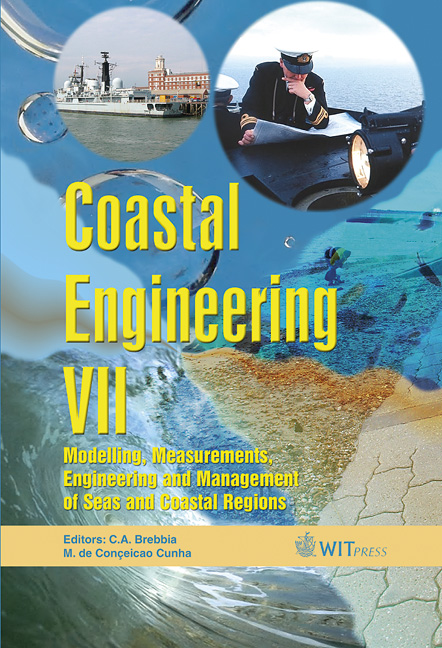Determining Seawall Crest Levels Using Risk Analysis Methodology
Price
Free (open access)
Transaction
Volume
78
Pages
10
Published
2005
Size
327 kb
Paper DOI
10.2495/CE050231
Copyright
WIT Press
Author(s)
M. T. Reis, T. S. Hedges, A. Williams & K. Keating
Abstract
PARASODE-BALI (Probabilistic Assessment of Risks Associated with Seawall Overtopping, Dune Erosion and Breakwater Armour Layer Instability) is a software package which employs the Level II First Order Reliability Method (FORM) for the design and safety assessment of sea defences. This paper provides an example of the use of PARASODE-BALI in designing a seawall subject to a combination of swell and locally-generated wave conditions. It illustrates the different results obtained from two overtopping models which it can employ to predict the minimum crest level necessary to limit seawall overtopping to some specified permissible value. Comparisons between the models show that, for large discharges associated with structural safety, they give similar results. However, the differences are greater for the small discharges commonly required to ensure the safety of people and property in urban areas. The paper also lists many of the wide range of consequences and potential effects of wave overtopping in urban areas. Keywords: safety of coastal structures, wave overtopping, bimodal conditions, risk analysis, probability of failure, First Order Reliability Method, software. 1 Introduction In the design of a seawall, it is important to strike the correct balance between satisfying the structural and functional requirements of the project, avoiding unnecessary expense, and having undesirable impacts on the environment. One important element in such considerations is the choice of the seawall crest level. Risk analysis provides a powerful framework for estimating the necessary crest level to
Keywords
safety of coastal structures, wave overtopping, bimodal conditions, risk analysis, probability of failure, First Order Reliability Method, software.





